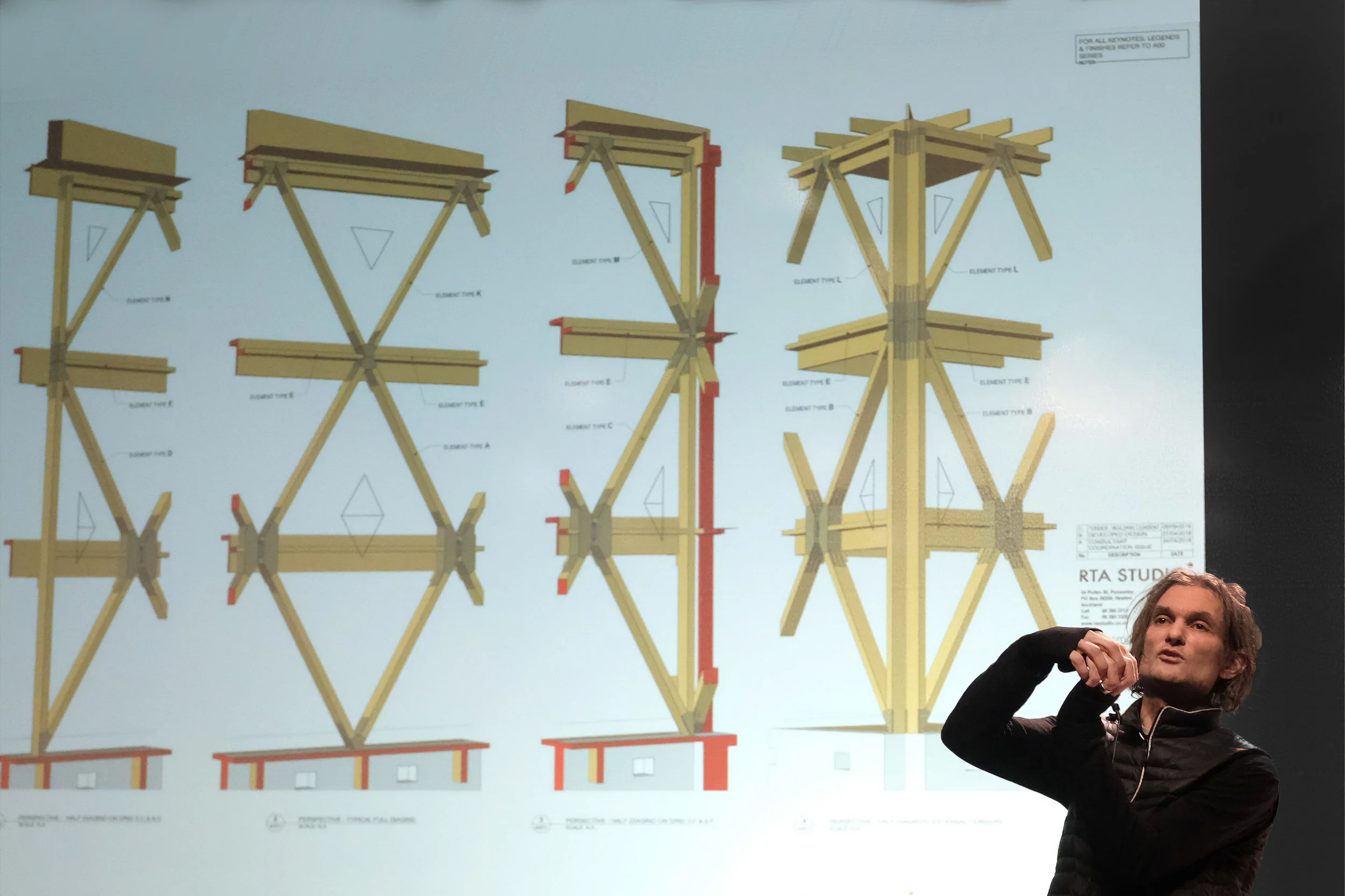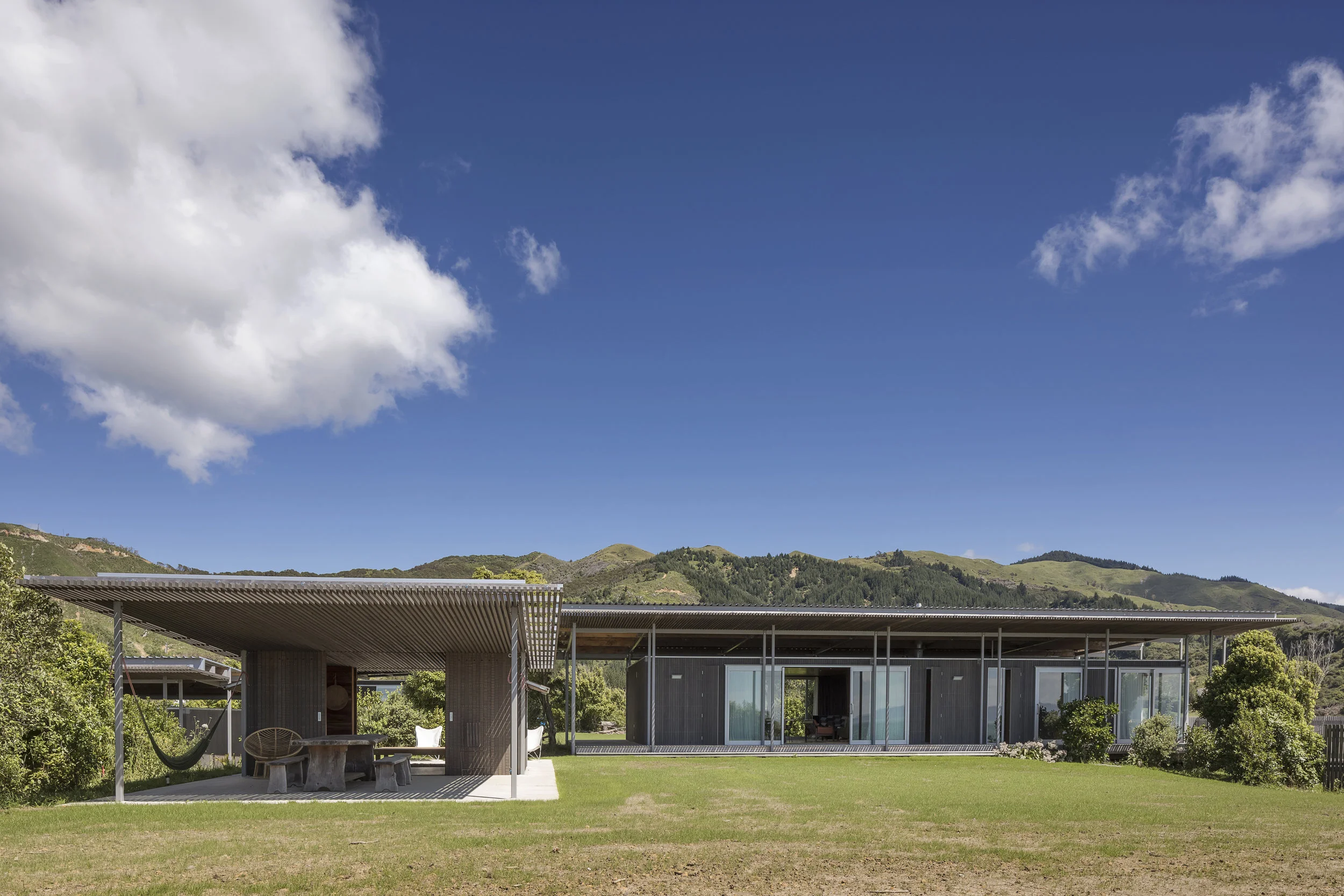The School of Architecture welcomed Jeremy Smith of Irving Smith Architects on Monday 25 February for the 2019 Spring Lecture Series. The New Zealand-based practice works within the context of “soft architecture” by embracing architectural design that conforms to shifting times and landscapes. Image: Michael Powell, Carnegie Mellon School of Architecture
By Evan Lehner
The School of Architecture welcomed Jeremy Smith of Irving Smith Architects on Monday 25 February for the 2019 Spring Lecture Series. Smith, whose practice is based in New Zealand, explained his firm’s work within the context of “soft architecture,” that is, architectural design that is first and foremost shaped by the landscape. Smith challenged the audience to think of what it means for architecture to be truly finished within the context of the ever-changing natural environment.
The root of Smith’s fascination with “soft” architecture stems from the climate and geology of New Zealand. He personifies the country’s inhabitants as not sitting lightly upon the landscape, but instead desperately holding onto it. Architecture, he reasons, should follow suit. Aesthetic architecture not designed for the multitude of New Zealand’s climates and environments can be quickly ravaged by the weather. Smith demonstrated this concept with an example of his own work, Bach with 2 roofs. Although the project took the site context into account, the designers did not anticipate every outcome. Soon after construction completion, the house was devastated by a cyclone, forcing the firm to head back to the drawing board.
The post-cyclone additions to Bach with 2 roofs re-finish the buildings to the new clearing, but do so by understanding a landscape that continues to shift, and a native forest that in time will again conceal and shelter. Image: Irving Smith Architects
Irving Smith’s response in the face of raw destruction touches upon another keystone of the firm’s work, the idea that architecture is never finished. Although the cyclone leveled the forest surrounding the house, in time, the trees will return. By working in even closer tandem with the systems of the environment, Smith asserted, “We are trying to make the process, to work in the landscapes that are constantly changing.” The result is a building which years after the final nail has been hammered is yet to be finished. The hierarchy of spaces in the house is broken down and separated, resulting in a division of the singular house into several blocks in order to encourage the forest to intrude into the building’s personal space. New systems, such as overhanging shading devices, can be removed once trees begin to encroach on the property.
Another of the firm’s signature projects highlighting this idea of unfinished architecture is the Nelson School of Music. This building, renovated and “finished” many times, was now a new project for Irving Smith. The multiple renovations led to a disjointed conglomerate of spaces with no order, resulting in the concert hall at the building’s center no longer acknowledged by the newer spaces. As with many other projects, the team thought about making the building’s architecture “soft.” After a lengthy study of the project’s most important spaces, the Irving Smith team identified the teaching areas as the spaces that truly relate the building to its landscape. The next step was to remove everything that is unnecessary. The result is a simple, yet aesthetically rich, building that restored prominence to the auditorium and cleared congested circulation.
New works serve the existing auditorium of the Nelson School of Music, giving back the corners and grandeur to the auditorium while re-finding its fit in its community. Image: Irving Smith Architects
The context in which Irving Smith designs almost requires a “soft” architectural approach. Designing architecture that fits into a distinct context and timeline is paramount, as evidenced in the Alexandra Tent House project and many more. Regarding the Alexandra Tent House, Smith remarked, “From the moment of arrival, we participated with what was there.” Continually learning through various projects eventually taught the architects never to “finish” their buildings. The result is captivating work that can positively influence the landscape surrounding it.
Evan Lehner is a third-year Bachelor of Architecture student in the Carnegie Mellon University School of Architecture.



